MSI GL75 review – great deal of raw performance paired with a high refresh rate display
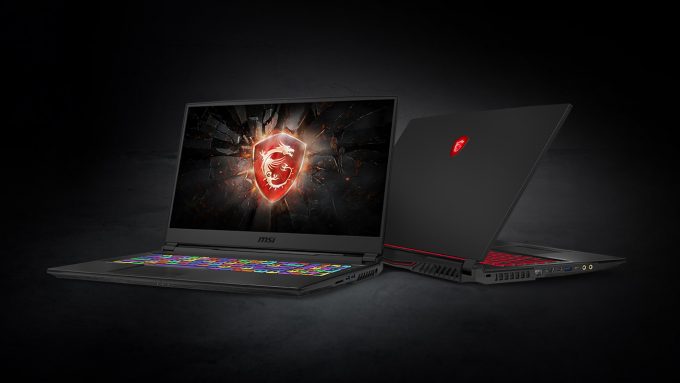 Large-screen gaming and a very decent price tag. This is what summarizes the retail listing of the MSI GL75. So, as far as we can see, MSI’s transition to more unobnoxious designs that are not so “in your face” is going well. A 17-inch laptop display means that there is a lot of space, but you have to be cautious about how you fill it in. On one side, the laptop can become too heavy, while on the other it may be unstable if too light.
Large-screen gaming and a very decent price tag. This is what summarizes the retail listing of the MSI GL75. So, as far as we can see, MSI’s transition to more unobnoxious designs that are not so “in your face” is going well. A 17-inch laptop display means that there is a lot of space, but you have to be cautious about how you fill it in. On one side, the laptop can become too heavy, while on the other it may be unstable if too light.
Also what hardware do you put in to make it budget-friendly and still be able to run through games like a hot knife through butter? Well, it’s obvious, isn’t it? Core i7-9750H and up to RTX 2060 with GTX 1660 Ti standing behind the corner. Now let’s put some plastic here and there, some battery, and we can call it a day. Whether this is how the thought process at MSI or not, we are going to give our best to test the laptop ourselves and tell you, our readers, if there are any shortcomings or setbacks.
You can check the prices and configurations in our Specs System: https://laptopmedia.com/series/msi-gl75/
Contents
Specs Sheet
- HDD/SSD
- up to 2000GB SSD + up to 2000GB HDD
- RAM
- up to 64GB
- OS
- No OS, Windows 10 Home, Windows 10 Pro
- Battery
- 51Wh, 3-cell, 51Wh, 6-cell
- Dimensions
- 359 x 271 x 28 mm (14.13" x 10.67" x 1.10")
- Weight
- 2.50 kg (5.5 lbs)
- Ports and connectivity
- 1x USB Type-C
- 3.2 Gen 1 (5 Gbps)
- 3x USB Type-A
- 3.2 Gen 1 (5 Gbps)
- HDMI
- Displayport mini
- Card reader
- SD, SDHC, SDXC
- Wi-Fi
- 802.11ac
- Bluetooth
- 5.0
- Audio jack
- 3.5 mm combo
- Features
- Fingerprint reader
- Web camera
- HD
- Backlit keyboard
- optional
- Speakers
- 2x 3W
- Optical drive
- Security Lock slot
All MSI GL75 configurations
What’s in the box?
Inside the package, you can see a 180W power brick, which looks like a box of a Turkish lokum. Then, there is the laptop itself, as well as some paper manuals to aid you with setting the machine up and to add to your fireplace later.
Design and construction
Naturally, the GL series of MSI features a plastic body with a smooth matte finish. Despite that, we are happy with the build quality, although the surface can be described as the neodymium magnet for fingerprints. Not everything is plastic here, though – the lid is made out of aluminum, which slightly enhances its resistance to flex. As of the weight – this is not the lightest 17-inch laptop out there, however, it is pretty easy to the scale at 2.5 kg. On the other side, the laptop is pretty thick – 28mm. Nevertheless, we expect this to have a good effect on cooling.
Sadly, the hinges mechanism is a bit too tight, and you won’t be able to open it with a single hand. Otherwise, we are happy to see such a thin side and top bezels, the latter of which is also home to the HD camera assembly.
If you don’t use an external keyboard, you might find this one pleasing to use. It has decent key travel and a satisfying click to the touch. However, we are not big fans of red backlights and we would recommend spending a little more for the per-key RGB illumination. Another thing we find interesting is the full-size of the “arrow” keys. On the downside, they are crammed in between the NumPad section and the rest of the keys, which makes it easy for you to misclick the “Shift” or “0” key.
Traditionally, MSI features a trio of dedicated keys that have very specific functions. They are placed in the top right corner of the base and include a Power On/Off button, a key that opens the Dragon Center and one very special one. Upon press, it summons the God of Wind and blows away the heat out of the chassis.
By the way, the GL75 features a pretty big touchpad which has good gliding properties and tracks very nice. Additionally, it has dedicated mouse buttons. They are nice, but in our opinion, the click they produce sounds cheap. It is very similar to the old school arcade machines.
Now, let’s turn the laptop upside down and see a good amount of ventilation grills. The air enters the machine from there, and after it is spun up to the speed of sound, it leaves the chassis from four sides. Another thing you’ll find on the bottom plate is the speakers.
Ports
On the left side of the notebook there is an RJ-45 Gigabit connector, followed by an HDMI port that supports 4K at 30Hz, a Mini DisplayPort, a USB Type-A 3.1 (Gen. 1) port, a USB Type-C 3.1 (Gen. 2) port, and two audio jacks – one for a mic, and another for headphones. Then, on the right, there is the power plug, which sits away from the ventilation grill, then two USB Type-A 3.1 (Gen. 1) ports and an SD card reader – overall a great setup for everyone.
Display quality
MSI GL75 is equipped with a Full HD 120Hz IPS panel, model number AUO B173HAN04.7 (AUO479D) – the same panel used on the ROG Strix G731. Its diagonal is 17.3″ (43.94 cm), and the resolution 1920 х 1080 pixels. The screen ratio is 16:9, and we are looking at a pixel density of – 127 ppi, and a pitch of 0.2 х 0.2 mm. The screen turns into Retina when viewed at distance equal to or greater than 69cm (27″) (from this distance one’s eye stops differentiating the separate pixels, and it is normal for looking at a laptop).
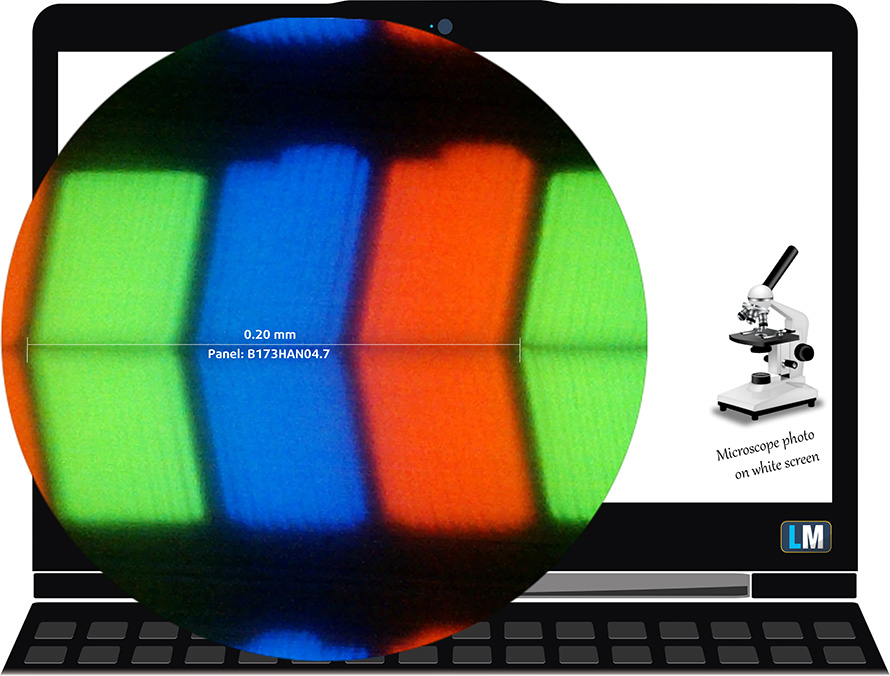
Viewing angles are comfortable. We offer images at 45° to evaluate image quality.

The measured maximum brightness of 280 nits in the middle of the screen and 278 nits as an average for the whole area, with a maximum deviation of only 5%. The Correlated Color Temperature on a white screen is 6230K – slightly warmer, almost matching the optimal for the sRGB standard of 6500K. The average color temperature through the grey scale before profiling is 6130K.
In the illustration below you can see how the display performs from a uniformity perspective. In other words, the leakage of light from the light source.
Values of dE2000 over 4.0 should not occur, and this parameter is one of the first you should check if you intend to use the laptop for color-sensitive work. The contrast ratio is good – 1360:1.

To make sure we are on the same page, we would like to give you a little introduction to the sRGB color gamut and the Adobe RGB. To start, there’s the CIE 1976 Uniform Chromaticity Diagram that represents the visible specter of colors by the human eye, giving you a better perception of the color gamut coverage and the color accuracy.
Inside the black triangle, you will see the standard color gamut (sRGB) that is being used by millions of people in HDTV and on the web. As for the Adobe RGB, this is used in professional cameras, monitors, etc for printing. Colors inside the black triangle are used by everyone and this is the essential part of the color quality and color accuracy of a mainstream notebook.
Still, we’ve included other color spaces like the famous DCI-P3 standard used by movie studios, as well as the digital UHD Rec.2020 standard. Rec.2020, however, is still a thing of the future and it’s difficult for today’s displays to cover that well. We’ve also included the so-called Michael Pointer gamut, or Pointer’s gamut, which represents the colors that naturally occur around us every day.
The yellow dotted line shows MSI GL75’s color gamut coverage.
Its display covers only 51% of the sRGB/ITU-R BT.709 (web/HDTV standard) in CIE1976.
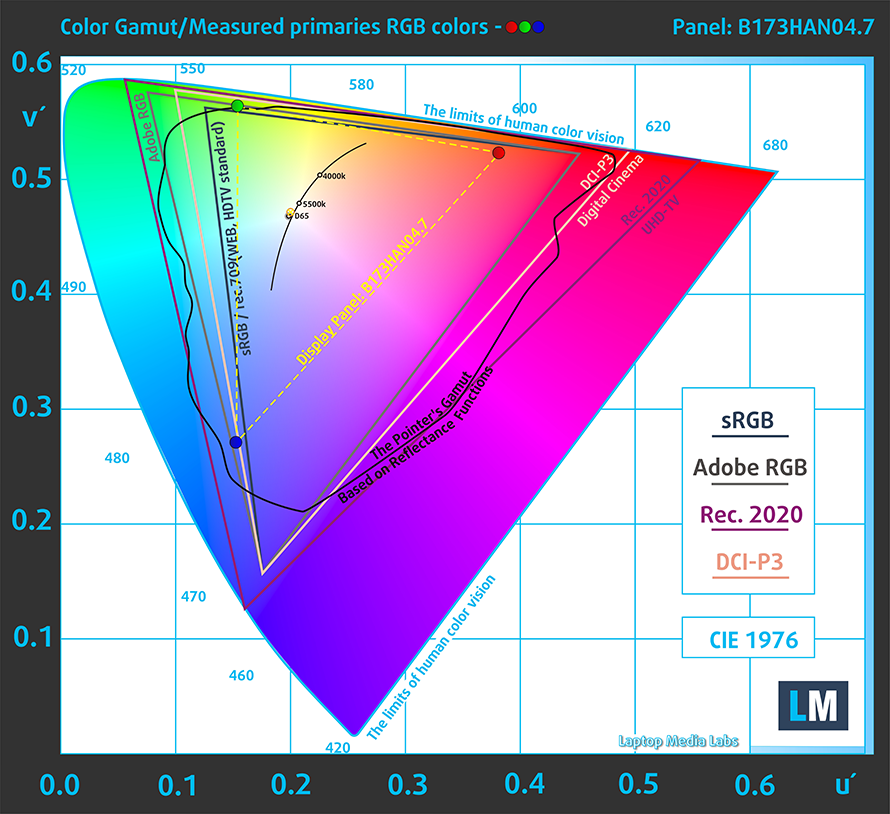
Our “Design and Gaming” profile delivers optimal color temperature (6500K) at 140 cd/m2 luminance and sRGB gamma mode.
We tested the accuracy of the display with 24 commonly used colors like light and dark human skin, blue sky, green grass, orange, etc. You can check out the results at factory condition and also, with the “Design and Gaming” profile.
Below you can compare the scores of MSI GL75 with the default settings (left), and with the “Gaming and Web design” profile (right).
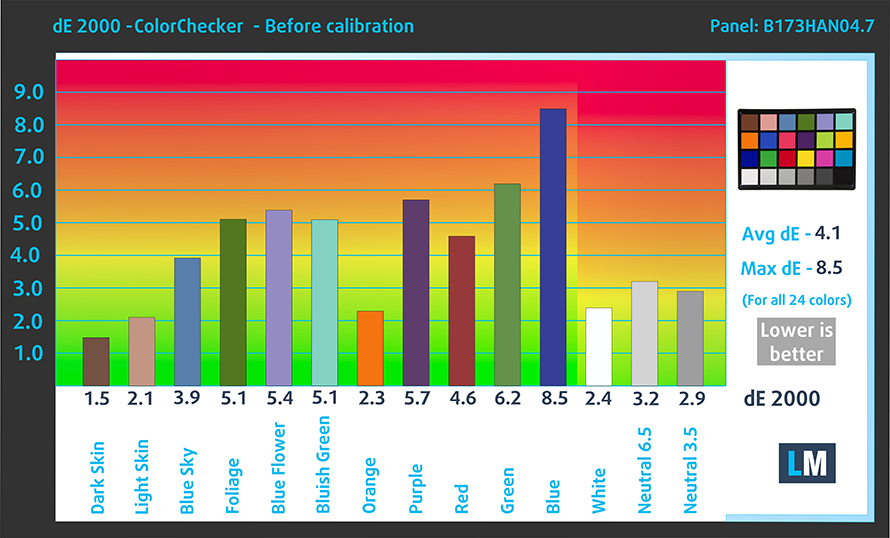
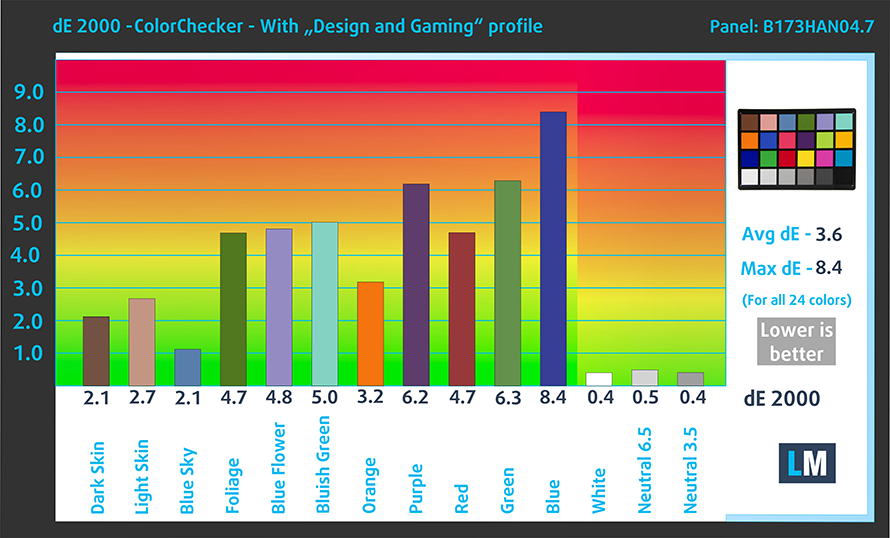
The next figure shows how well the display is able to reproduce really dark parts of an image, which is essential when watching movies or playing games in low ambient light.
The left side of the image represents the display with stock settings, while the right one is with the “Gaming and Web Design” profile activated. On the horizontal axis, you will find the grayscale and on the vertical axis – the luminance of the display. On the two graphs below you can easily check for yourself how your display handles the darkest nuances but keep in mind that this also depends on the settings of your current display, the calibration, the viewing angle, and the surrounding light conditions.
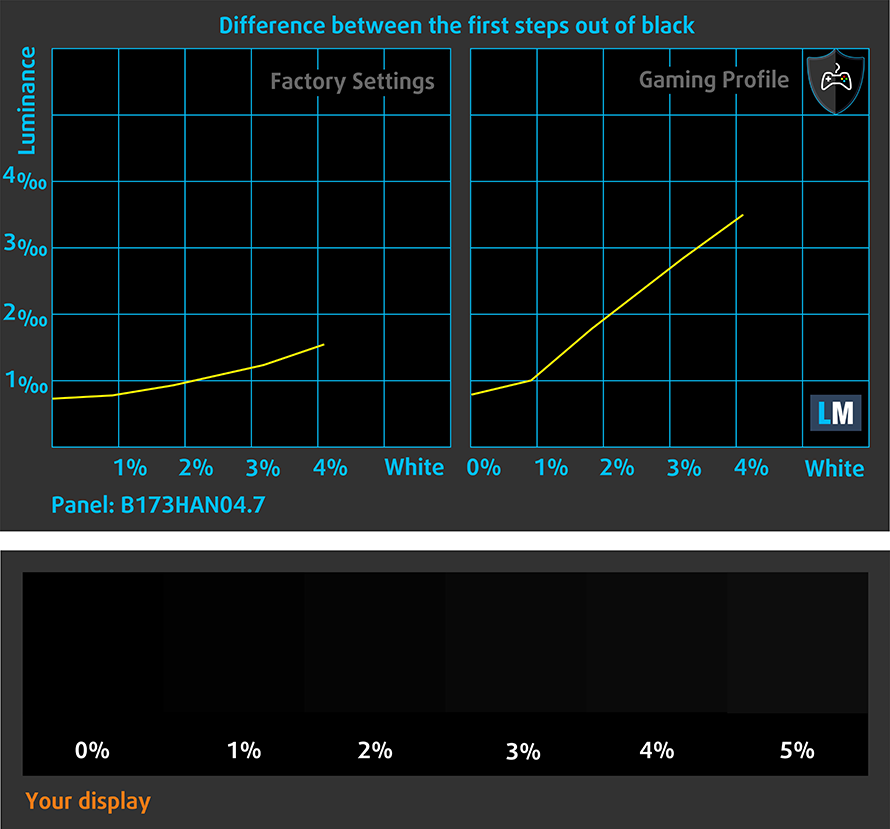
Response time (Gaming capabilities)
We test the reaction time of the pixels with the usual “black-to-white” and “white-to-black” method from 10% to 90% and vice versa.
We recorded Fall Time + Rise Time = 24 ms.
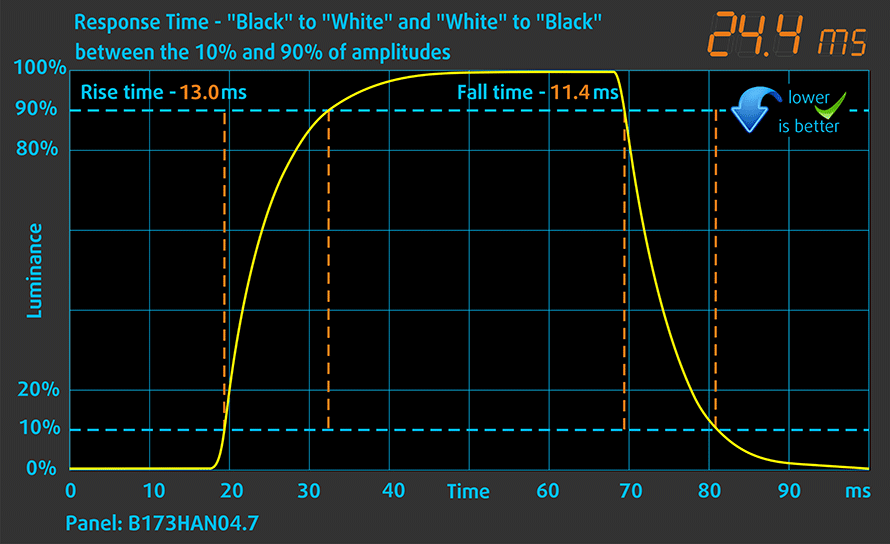
PWM (Screen flickering)
Pulse-width modulation (PWM) is an easy way to control monitor brightness. When you lower the brightness, the light intensity of the backlight is not lowered, but instead turned off and on by the electronics with a frequency indistinguishable to the human eye. In these light impulses, the light/no-light time ratio varies, while brightness remains unchanged, which is harmful to your eyes. You can read more about that in our dedicated article on PWM.
The backlight of the MSI GL75 doesn’t use PWM to adjust its levels of brightness. This means the display is comfortable for use, without presenting any excessive eye strain in this aspect.
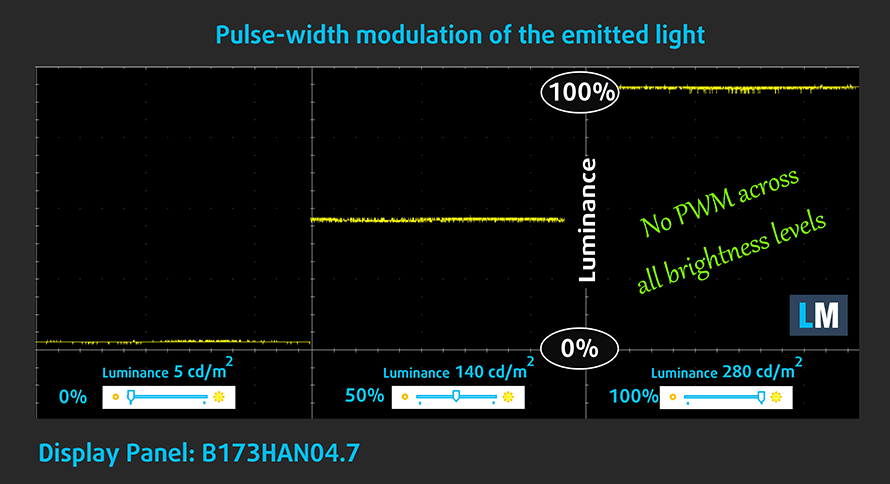
Blue light emissions
Installing our Health-Guard profile not only eliminates PWM but also reduces the harmful Blue Light emissions while keeping the colors of the screen perceptually accurate. If you’re not familiar with the Blue light, the TL;DR version is – emissions that negatively affect your eyes, skin and your whole body. You can find more information about that in our dedicated article on Blue Light.
Conclusion
MSI GL75’s display in the configuration we tested has a 120Hz IPS panel with Full HD resolution, good contrast ratio, and comfortable viewing angles. Moreover, its backlight lacks PWM, making it safe for work for long periods. What will be the biggest interest for gamers, however, is the fast refresh rate. Sadly, the response times are quite slow, which can result in ghosting in fast-paced games. Also, the picture it displays is not very punchy, as the panel covers only 51% of sRGB.
Buy our profiles
Since our profiles are tailored for each individual display model, this article and its respective profile package are meant for MSI GL75 configurations with 17.3″ FHD IPS AUO B173HAN04.7 (AUO479D).
*Should you have problems with downloading the purchased file, try using a different browser to open the link you’ll receive via e-mail. If the download target is a .php file instead of an archive, change the file extension to .zip or contact us at [email protected].
Read more about the profiles HERE.
In addition to receiving efficient and health-friendly profiles, by buying LaptopMedia's products you also support the development of our labs, where we test devices in order to produce the most objective reviews possible.

Office Work
Office Work should be used mostly by users who spend most of the time looking at pieces of text, tables or just surfing. This profile aims to deliver better distinctness and clarity by keeping a flat gamma curve (2.20), native color temperature and perceptually accurate colors.

Design and Gaming
This profile is aimed at designers who work with colors professionally, and for games and movies as well. Design and Gaming takes display panels to their limits, making them as accurate as possible in the sRGB IEC61966-2-1 standard for Web and HDTV, at white point D65.

Health-Guard
Health-Guard eliminates the harmful Pulse-Width Modulation (PWM) and reduces the negative Blue Light which affects our eyes and body. Since it’s custom tailored for every panel, it manages to keep the colors perceptually accurate. Health-Guard simulates paper so the pressure on the eyes is greatly reduced.
Get all 3 profiles with 33% discount
Sound
MSI GL75’s speakers produce a semi-loud sound with good quality. Its low, mid and high tones are clear of deviations.
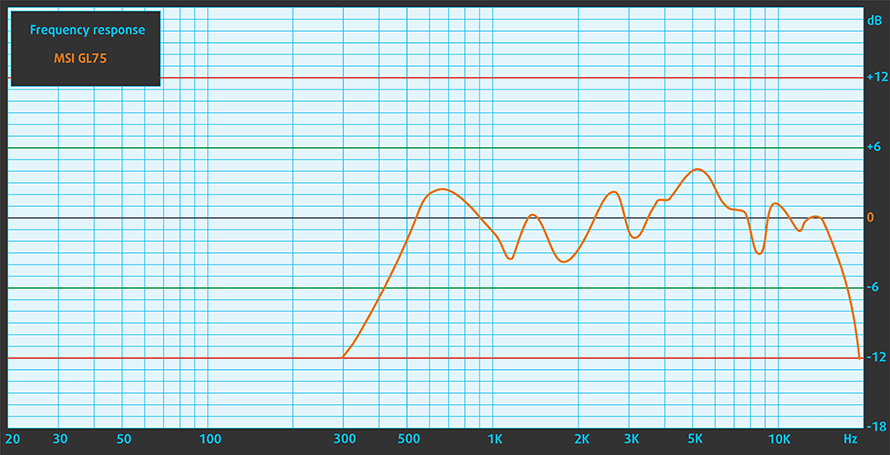
Drivers
All of the drivers and utilities for this notebook can be found here: https://www.msi.com/Laptop/support/GL75-9SX-GTX
Battery
Now, we conduct the battery tests with Windows Better performance setting turned on, screen brightness adjusted to 120 nits and all other programs turned off except for the one we are testing the notebook with. Even though the GL75 features a 17.3-inch 120Hz panel, MSI decided to fit it with a mere 51Wh battery pack.
This results in 6 hours of Web browsing and 6 hours and 20 minutes of video playback.
In order to simulate real-life conditions, we used our own script for automatic web browsing through over 70 websites.
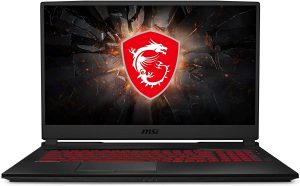
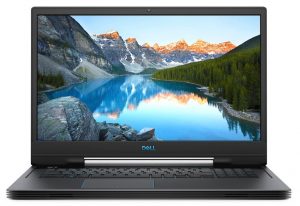
For every test like this, we use the same video in HD.


CPU options
As far as we know the processor options are limited to the Core i7-9750H only. In the feature there might be more CPUs to choose from but, we can’t be really sure about that. Nevertheless, the six-core/twelve-threads setup is very capable and is hardly going to result in a bottleneck with any current consumer GPU there is on the market right now.
Results are from the Cinebench 20 CPU test (the higher the score, the better)
Results are from our Photoshop benchmark test (the lower the score, the better)
GPU options
In comparison, the graphics card choices are far more extensive. With that said, there are no more than 3 GPUs to pick – the GTX 1650 with 4GB of GDDR5 memory, the GTX 1660 Ti with 6GB of GDDR6 memory, or the RTX 2060 also with 6GB of GDDR6 memory.
Results are from the 3DMark: Time Spy (Graphics) benchmark (higher the score, the better)
Results are from the 3DMark: Fire Strike (Graphics) benchmark (higher the score, the better)
Results are from the Unigine Superposition benchmark (higher the score, the better)
Gaming tests
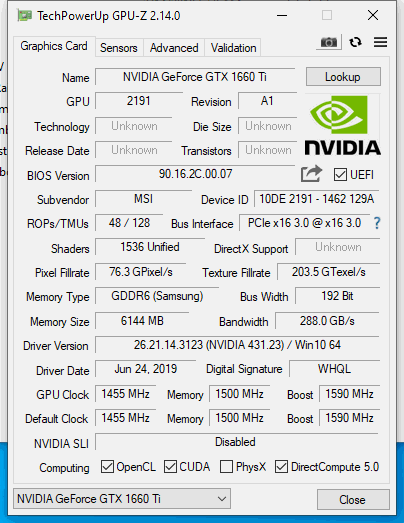

| Far Cry 5 | Full HD, Normal (Check settings) | Full HD, High (Check settings) | Full HD, Ultra (Check settings) |
|---|---|---|---|
| NVIDIA GeForce GTX 1660 Ti | 84 fps | 81 fps | 77 fps |

| Rise of the Tomb Raider (2016) | Full HD, Medium (Check settings) | Full HD, Very High (Check settings) | Full HD, MAX (Check settings) |
|---|---|---|---|
| NVIDIA GeForce GTX 1660 Ti | 107 fps | 65 fps | 42 fps |

| Tom Clancy’s Ghost Recon Wildlands | Full HD, High (Check settings) | Full HD, Very High (Check settings) | Full HD, Ultra (Check settings) |
|---|---|---|---|
| NVIDIA GeForce GTX 1660 Ti | 66 fps | 60 fps | 45 fps |

| Shadow of the Tomb Raider (2018) | Full HD, Medium (Check settings) | Full HD, High (Check settings) | Full HD, Highest (Check settings) |
|---|---|---|---|
| NVIDIA GeForce GTX 1660 Ti | 73 fps | 71 fps | 50 fps |
Temperatures and comfort
Max CPU load
In this test we use 100% on the CPU cores, monitoring their frequencies and chip temperature. The first column shows a computer’s reaction to a short load (2-10 seconds), the second column simulates a serious task (between 15 and 30 seconds), and the third column is a good indicator of how good the laptop is for long loads such as video rendering.
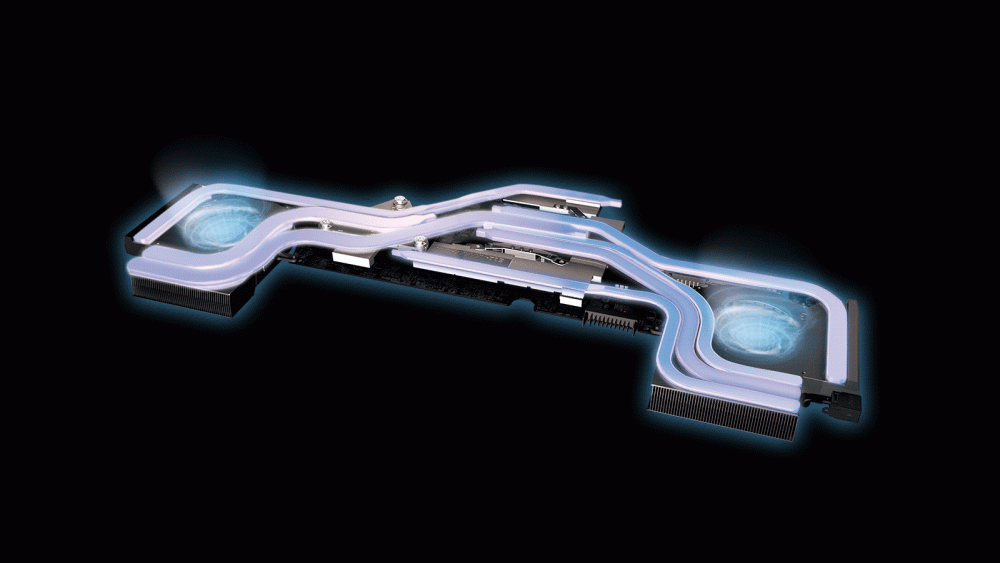
Average core frequency (base frequency + X); CPU temp.
| Core i7-9750H (45W TDP) | 0:02 – 0:10 sec | 0:15 – 0:30 sec | 10:00 – 15:00 min |
|---|---|---|---|
| MSI GL75 | 3.53 GHz (B+36%)@ 88°C | 3.53 GHz (B+36%)@ 95°C | 3.08 GHz (B+18%)@ 82°C |
| MSI GS75 Stealth | 3.56 GHz (B+37%)@ 95°C | 3.36 GHz (B+29%)@ 95°C | 3.20 GHz (B+23%)@ 95°C |
| Acer Predator Helios 300 17 (2019) | 3.09 GHz (B+19%)@ 55°C | 3.10 GHz (B+19%)@ 59°C | 2.99 GHz (B+15%)@ 66°C |
| HP Pavilion Gaming 15 2019 | 3.57 GHz (B+37%)@ 81°C | 2.88 GHz (B+11%)@ 73°C | 2.66 GHz (B+2%)@ 73°C |
| Lenovo Legion Y7000 (2019) | 3.34 GHz (B+28%)@ 72°C | 3.15 GHz (B+21%)@ 82°C | 2.99 GHz (B+15%)@ 79°C |
| Lenovo Legion Y540 | 2.78 GHz (B+7%)@ 74°C | 3.08 GHz (B+18%)@ 90°C | 2.87 GHz (B+10%)@ 79°C |
| ASUS ROG G731 | 3.38 GHz (B+30%)@ 87°C | 3.43 GHz (B+32%)@ 94°C | 2.63 GHz @ 73°C |
| ASUS ROG G531 | 3.41 GHz (B+31%)@ 95°C | 3.23 GHz (B+24%)@ 95°C | 2.72 GHz (B+5%)@ 79°C |
Indeed, the bulkier body helps the cooling reach pretty high clock speeds. It works at 3.00 GHz and higher at all times, and reaches reasonable temperatures, unlike the ultra thin MSI GS75 Stealth.
Real-life gaming
| NVIDIA GeForce GTX 1660 Ti | GPU frequency/ Core temp (after 2 min) | GPU frequency/ Core temp (after 30 min) | GPU frequency/ Core temp (max fans) |
|---|---|---|---|
| MSI GL75 | 1714 MHz @ 66°C | 1708 MHz @ 68°C | 1726 MHz @ 62°C |
| Lenovo Legion Y7000 (2019) | 1669 MHz @ 66°C | 1646 MHz @ 71°C | – |
| Lenovo Legion Y540 | 1761 MHz @ 76°C | 1752 MHz @ 82°C | – |
| Acer Nitro 5 (AN515-54) | 1660 MHz @ 78°C | 1635 MHz @ 84°C | – |
Additionally, the GL75 is fully capable of handling the load from the GTX 1660 Ti. By far it is the coolest device we’ve tested with this graphics card, and although it posts slightly lower frequencies, the temperature is a factor that cannot be overlooked. Moreover, you can always use the Max-Fan speed option, which vacuums the laptop to the table but lowers the temps even further.
Gaming comfort
Unfortunately, the fans on this thing are really loud. And fear not – they can become louder when you press the max fan key. At least, the device is not that hot on the outside.
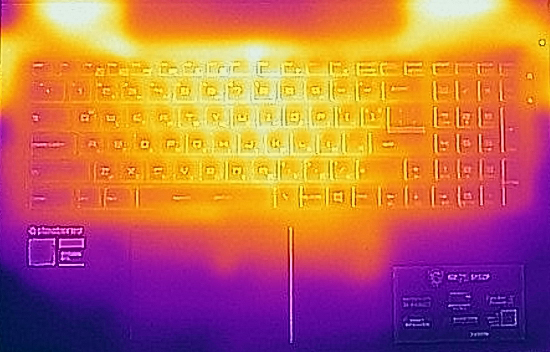
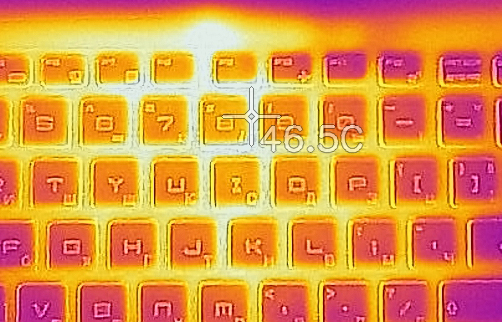
Verdict
This is a hell of a notebook you have built, MSI. It is capable of handling any game, as well as video rendering, 3D modeling and other intensive loads. If one needs a powerful machine to boost their daily work and computing, the GL75 certainly going to deliver.
However, there are some annoyances, that are lowering the overall value of the notebook. One of them is the battery life. Man, we doubt that it is THAT expensive to put a higher capacity unit. 51Wh is just not big enough. A good example of that is our battery tests. They are usually very lenient on the devices and show the best-case scenario. Nevertheless, this laptop was able to endure for up to 6 hours of Web browsing and 6 hours and 20 minutes of video playback. Once you through some kind of heavy load on the powerful hardware – expect it to drain as a freshly unclogged sink.
Also, if you have a good pair of headphones, you can happily use it every time you play games on this laptop. Its cooling is very effective, but man it is loud. Too loud in our opinion. And that is not even at the highest possible speed.
Let’s take a break from complaining and shaken up the thing a bit. As we said, we are generally happy with the laptop. It has good performance, and its I/O features almost everything you may need in 2020. Where it lacks in Thunderbolt connectivity, it catches up with display outputs, an SD card reader, Gigabit connectivity and two 3.5mm jacks.
MSI GL75’s display in the configuration we tested has a 120Hz IPS panel AUO B173HAN04.7 (AUO479D) with Full HD resolution, good contrast ratio, and comfortable viewing angles. Moreover, its backlight lacks PWM, making it safe for work for long periods. What will be the biggest interest for gamers, however, is the fast refresh rate. Sadly, the response times are quite slow, which can result in ghosting in fast-paced games. Also, the picture it displays is not very punchy, as the panel covers only 51% of sRGB.
Honestly, we can talk about it for quite a while, but the main thing we want to stress out is that this is a very reasonably priced machine. For this price, you get a lot of value. Enough, to cover up all of the shortcomings. At least in our opinion. If you want to check some similar notebooks, you can pay a visit to the Acer Helios 300 17 (2019) and the HP Omen 17 (2019) – both of them are more expensive than the GL75 but offer something in exchange.
Pros
- Great price
- Good keyboard with decent travel, big arrows, and an optional per-key RGB backlight
- Big, comfortable touchpad with dedicated buttons
- Capable cooling solution
- Has a great deal of raw performance
- The display doesn’t flicker at any brightness level (AUO B173HAN04.7)
- Has a good contrast ratio and comfortable viewing angles (AUO B173HAN04.7)
Cons
- Mediocre battery life
- Its fans are loud during gaming
- Covers only 51% of sRGB and has slow response times (despite the fast refresh rate) (AUO B173HAN04.7)
You can check the prices and configurations in our Specs System: https://laptopmedia.com/series/msi-gl75/
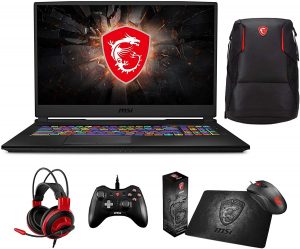

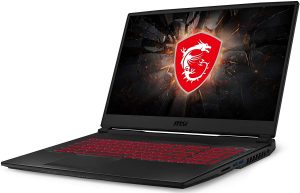
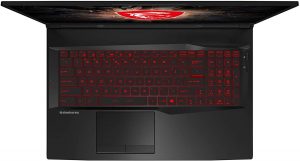


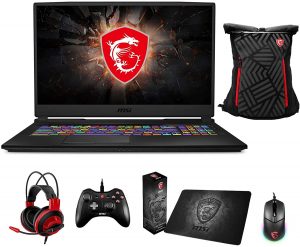
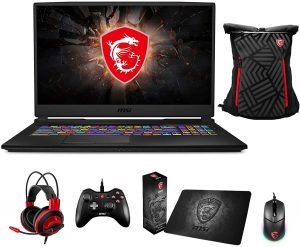
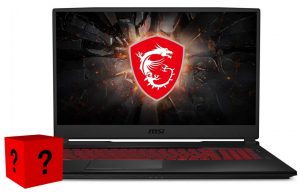

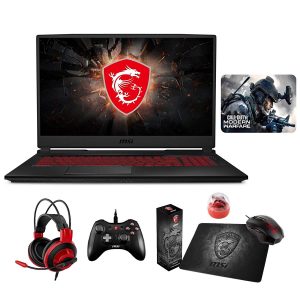

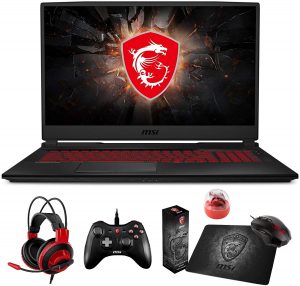
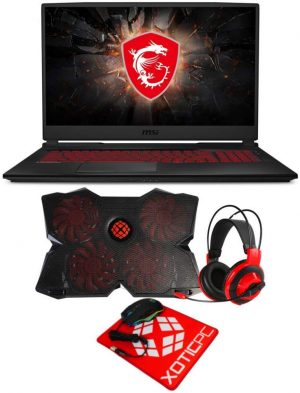
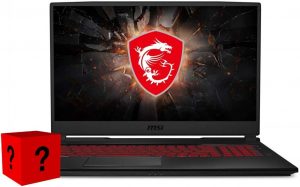
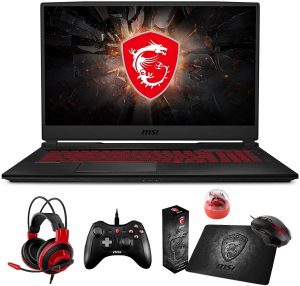
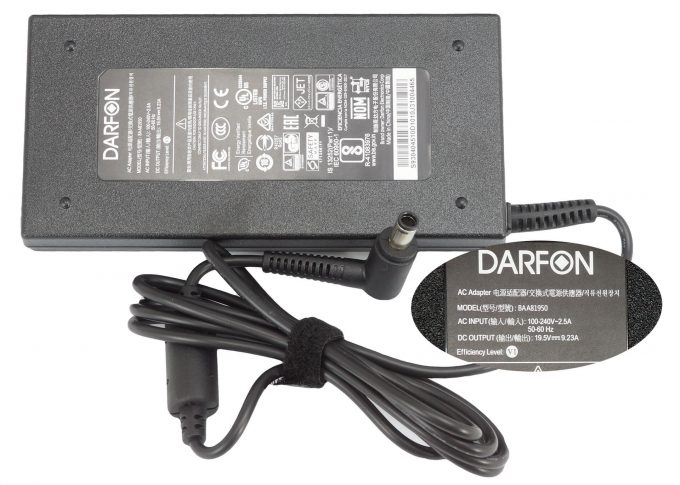

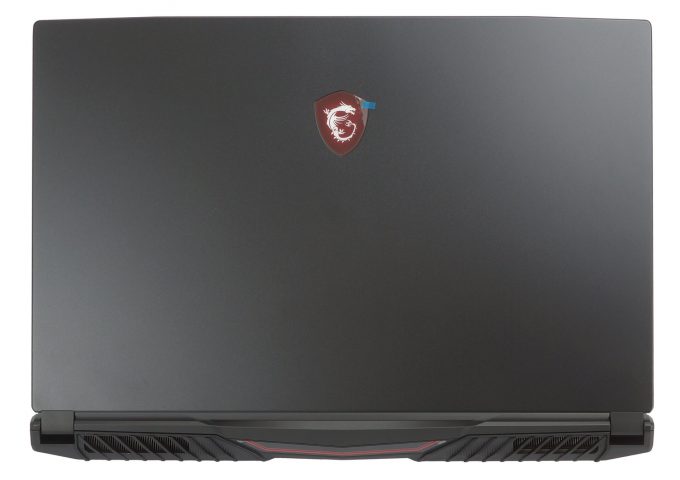
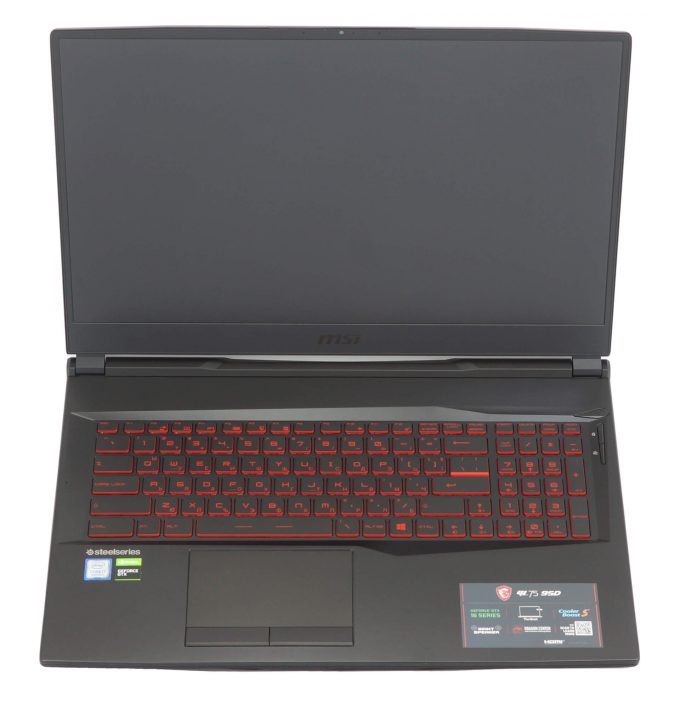
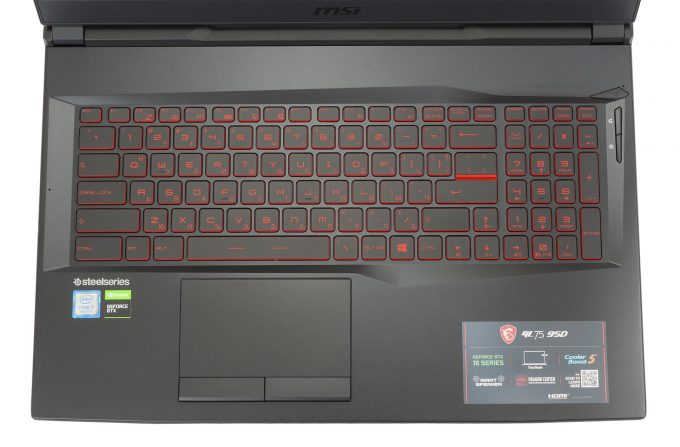
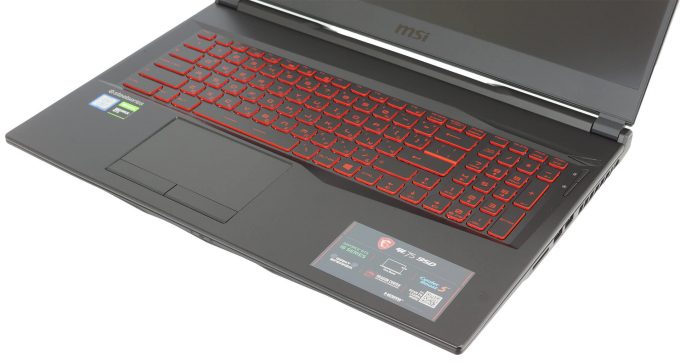
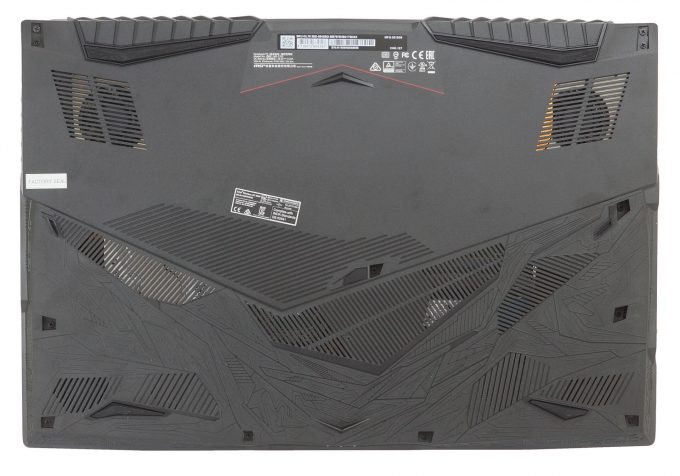



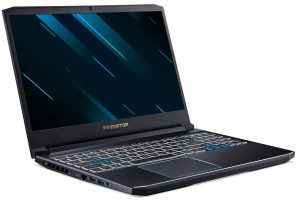
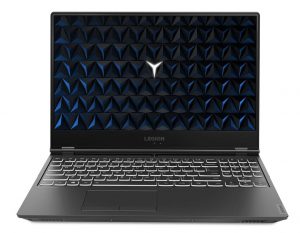
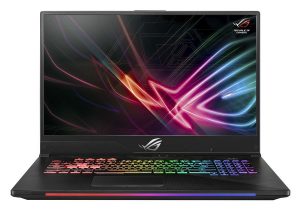








NotebookCheck.net got some very different numbers for pixel response time. Any idea why the discrepancy?
https://www.notebookcheck.net/MSI-GL75-9SEK-Laptop-Review-An-average-mid-range-gaming-laptop-with-loud-fans.435496.0.html#toc-display
Hey Geoff,
Actually, the mistake was ours. We were using the graphics from another laptop ? (oops). We have now updated the review with the appropriate image, and indeed the response time seems too slow.
Any idea about the “17.3” FHD 144Hz 3ms 100% sRGB Display” option? It’s on sale at costco for 1199.00…
MSI GL75 Leopard Gaming Laptop – 10th Gen Intel Core i7-10750H – GeForce GTX 1660Ti – 144Hz 1080p Display
Item 1430689Model GL75 Leopard 10SDR-011
Your Price1,199.99